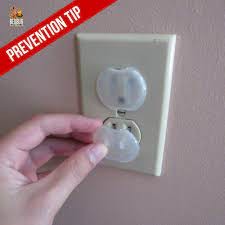Bed bugs don’t usually cause serious health concerns, but they can turn your life into a living nightmare. A study shows that these bugs can cause severe mental illnesses, including anxiety, depression, and some reports of suicidal tendencies. It is, therefore, in your best interest to prevent bed bugs from attacking the safety of your home.
When most of us think of bed bug prevention, all we can imagine is complex, expensive prevention techniques. Consider yourself lucky because this post takes you through those essential prevention tips that will not hurt your pocket.
Table of Contents
1. Learn to inspect all items before you bring them into your home
Bed bugs are excellent hitchhikers; as recent statistics show, they are everywhere across the 50 US States. Whenever you get goods from a store or souvenirs from a vacation, you will bring bed bugs home if the items in question were exposed to infestations. Inspecting all items before you bring them into your home is best to avoid getting bed bugs.
Secondhand items have a much higher chance of carrying bed bugs than new ones. You must inspect such items thoroughly and treat them even if you don’t see any signs of bed bugs. Bed bugs can hide in the tiniest spots; EVERY PRECAUTION IS WORTH IT!
2. Use vacuum bags for storage
Storing all your clothing, bedding, and other linen in vacuum-sealed bags protects you against bed bugs. This protective measure is especially vital when traveling because you will have to stay in hotels. Recent statistics show that 68% of hotels in the USA, including high-end establishments, have bed bugs.
Vacuum-sealed bags prevent bed bugs from infesting your luggage. If bed bugs are already in the luggage, the sealed bag prevents oxygen from circulating, killing bed bugs and their eggs. Inspect the vacuum bag to ensure that it does not have any tears or openings
3. Know what bed bugs look like
Recognizing bed bugs when you see them is the first line of defense against them. It would be best to educate yourself on what bed bugs look like across all their life stages, from the egg to the adult. You should also know what bed bug bites look like and differentiate them from bites from other common pests.
4. Inspect your pets
While bed bugs do not spend as much time on pets, your pet’s beddings provide warm hiding spots. A pet’s beddings and crevices around its sleeping area provide ideal places for bed bugs to lay eggs and multiply. Inspect your pet’s resting space and regularly wash its bedding.
5. Get rid of clutter
Bed bugs are not attracted to dirt and disarray, but clutter provides several potential hiding spots. Organizing your home and getting rid of litter reduces potential hiding spots for bed bugs. This will make it easier to identify bed bugs before turning into a full-blown infestation. Eliminating clutter also minimizes the risk of bringing bed bugs into your home.
6. Vacuum regularly
Vacuuming is a non-chemical control method that helps against bed bugs. Using a vacuum machine on rugs, carpets, furnishings, furniture, and floors removes bed bugs in your home. To be more precise, vacuuming works to:
- Remove large bundles of clustered bed bugs in one go
- Get rid of insecticide-resistant bed bugs
- Remove clutter and other debris that can provide potential hiding spots for bed bugs
Vacuuming has a preventative measure against bed bugs and works best if you do it regularly, like daily or at least, after 2 to 3 days. Bed bugs often hide in a room’s perimeter because such spots have many cracks and crevices. When vacuuming, focus on soft surfaces and every room’s edge, where the walls and the floor come together.
7. Wash all your clothes after every trip
The thought that coming home with a few fresh clothes after a trip is pure joy because you have less laundry to deal with is wrong. To protect your home from bed bugs, you must wash everything after a trip, including the clothes you didn’t wear.
When returning from your trip, store all your clothes in a vacuum-sealed bag. Once you get back home, take them out and wash them at a high temperature of up to 140°F (60°C). Here is a guide on using your washing machine against bed bugs.
8. Inspect your furniture
Furniture is often one of the first casualties of a bed bug infestation. Check all furniture pieces as frequently as possible. Apart from living bed bugs, it would be best to watch for other common signs of bed bugs.
- Bed bug exoskeletons
- Dark brown or rusty spots
- Bed bug eggs which look like tiny rice grains
9. Cover power outlets in your home
Power outlets put your home at risk of getting bed bugs, especially if you live in an apartment complex. If your immediate neighbor has bed bugs, they can crawl through power outlets in the adjoining wall and come into your home.
To keep your children safe, use certified baby-proof power outlets to keep the bed bugs away.
10. Beware of bed bugs in public spaces
Constant vigilance is one of the best you can use to prevent bed bugs. They are everywhere, especially in public spaces such as hotels, public transport, hospitals, and retail stores, to name a few. You can find bed bugs in the least unsuspected areas, such as a high-end store’s dressing room or the cushioned seats of a dressing room.
To avoid unknowingly taking bed bugs home, you must always be vigilant and thoughtful. Do not take an unnecessary risk, such as putting your belongings in a public sitting area. Instead, exercise caution and go for safer alternatives, for instance, hanging your clothes on the hooks provided in the store’s changing room.


